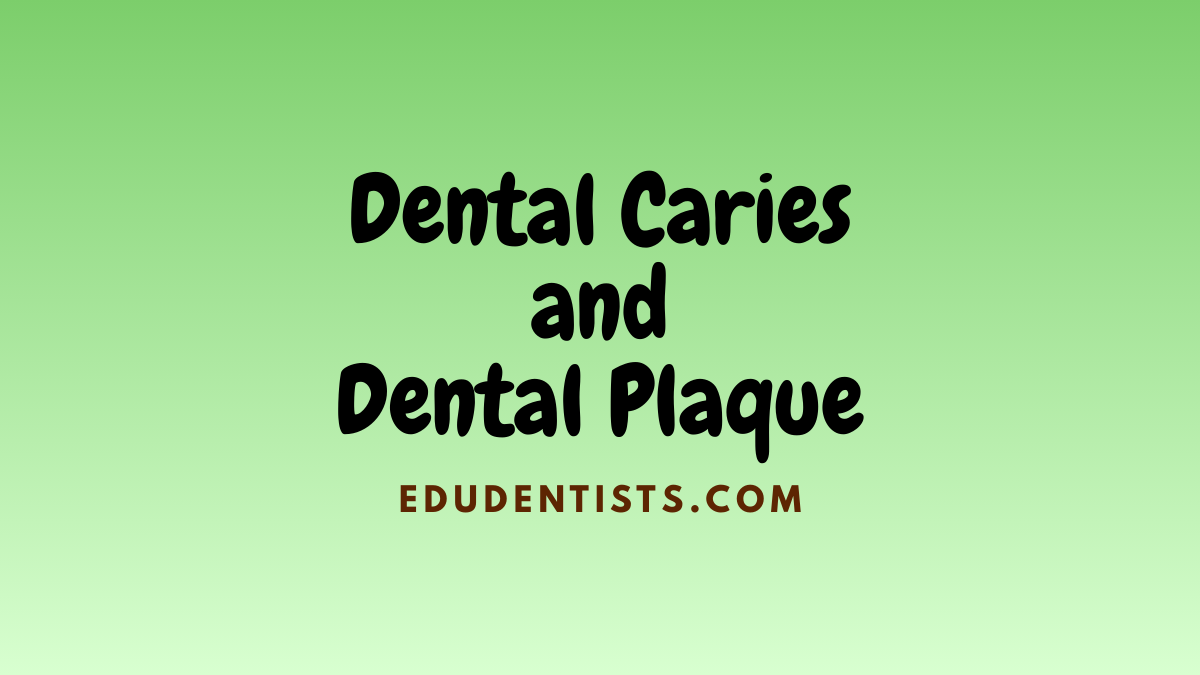
Dental Caries
Dental caries is a common, multifactorial microbiological disease affecting the hard tissues of the teeth. It is characterized by the localized demineralization of the inorganic structure and the breakdown of the organic components of the tooth.
Caries development is closely associated with the presence of dental plaque, a structured biofilm composed of metabolically active microorganisms. These microorganisms adhere to tooth surfaces and ferment dietary carbohydrates, leading to acid production and a drop in plaque pH below 5 within minutes. This acidic environment initiates the demineralization of enamel and dentin.
Fortunately, the saliva plays a crucial protective role, neutralizing the acid and allowing remineralization of the tooth surface. However, when demineralization outweighs remineralization over time, a visible carious lesion develops.
The caries process is dynamic and continuous, involving cycles of exacerbation and remission. Due to the variability in caries activity, the progression of individual lesions is not always predictable.
Cariology is the scientific field dedicated to understanding the etiology, histopathology, diagnosis, prevention, and treatment of dental caries.
Sites of Dental Caries
Common Sites of Dental Caries
Dental caries commonly develops in areas where dental plaque accumulates and stagnates, as plaque is the primary contributor to caries formation. These high-risk sites include:
- Pits and fissures on occlusal surfaces of molars and premolars
- Buccal pits of molars
- Palatal pits of maxillary incisors
- Cervical enamel just coronal to the gingival margin
- Proximal smooth enamel surfaces apical to the contact point
- Root surfaces exposed due to gingival recession from periodontal disease
- Margins of defective or overhanging restorations
- Surfaces adjacent to dentures and bridges
These anatomical and restorative features create environments conducive to plaque retention, making them prone to the initiation and progression of carious lesions.
Dental Plaque and Biofilm: Formation, Structure, and Role in Caries
Definition and Characteristics
Dental plaque is a complex, adherent microbial deposit that forms on tooth surfaces. It consists of bacteria and their metabolic byproducts, embedded within a structured matrix. It is considered a biofilm, defined as a microbiologically derived community where cells are irreversibly attached to a surface or to each other, embedded in an extracellular polymeric matrix they produce, and exhibiting altered growth and gene expression patterns.
Features of Biofilm
Microorganisms in a biofilm exhibit enhanced survival mechanisms and cooperation. Notable features include:
- Protective Matrix: Bacteria produce polysaccharides that shield the community from environmental stressors such as UV radiation, metals, and toxins.
- Nutrient Trapping: Biofilm organisms can collectively degrade large nutrient molecules that single microbes cannot process efficiently.
- Internal Microenvironments: Biofilms develop organized structures with varied oxygen levels, pH, and nutrient distribution, allowing multiple species to coexist.
- Genetic Exchange: Bacteria can exchange genes, promoting the evolution of more resilient and diverse communities.
Biofilms are thus resistant to environmental changes, capable of self-organization, and more effective collectively than as individual microorganisms.
Composition of Dental Biofilm
A. Inorganic Components: Higher levels of calcium, phosphate, and fluoride than found in saliva.
B. Organic Components:
1. Carbohydrates: Glucans, fructans produced by bacteria.
2. Proteins: From saliva (supragingival) and gingival crevicular fluid (subgingival).
3. Lipids: Including endotoxins from Gram-negative bacteria.
Development of Dental Biofilm
The formation of biofilm on oral surfaces occurs in three distinct stages:
1. Pellicle Formation: A proteinaceous, acellular film derived from saliva forms on the tooth surface. It acts as the initial attachment site for bacteria.
2. Bacterial Colonization: Bacteria adhere to the pellicle, forming microcolonies:
– Stage 1: Gram-positive cocci (e.g., Streptococcus species)
– Stage 2: Fusobacterium species
– Stage 3: Gram-negative bacteria
3. Biofilm Maturation: Over two weeks, the biofilm matures, incorporating vibrios and spirochetes. Composition varies across sites, explaining uneven caries distribution in the oral cavity.
Cariogenic Bacteria and Dental Caries Pathogenesis
Certain bacteria possess unique properties that make them cariogenic (caries-causing):
A. Acidogenic: Capable of fermenting sugars into acid.
B. Aciduric: Able to survive and function in low pH environments.
C. Polysaccharide Production: Synthesize extracellular and intracellular polysaccharides, enhancing the plaque matrix. Intracellular polysaccharides can be metabolized into acids when external sugars are unavailable.
These traits contribute directly to the demineralization of tooth enamel and dentin, playing a central role in the development and progression of dental caries.